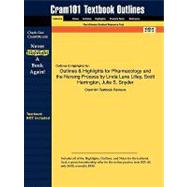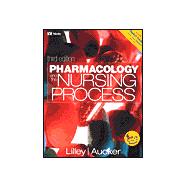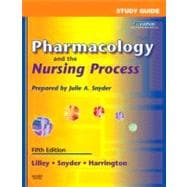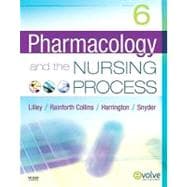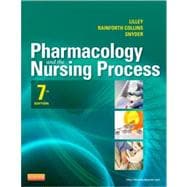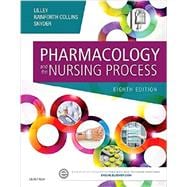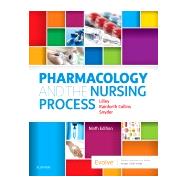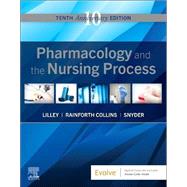Pharmacology and the Nursing Process
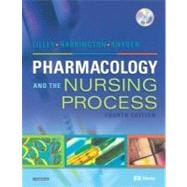
Pharmacology and the Nursing Process
- ISBN 13:
9780323024082
- ISBN 10:
0323024084
- Edition: 4th
- Format: Paperback
- Copyright: 05/10/2004
- Publisher: Mosby
- Newer Edition
Rent
Sorry, this item is currently unavailable.
Note: Supplemental materials are not guaranteed with Rental or Used book purchases.
Extend or Purchase Your Rental at Any Time
Need to keep your rental past your due date? At any time before your due date you can extend or purchase your rental through your account.
Summary
This bestselling text is known for its clear and consistent format, colorful design, and helpful boxed features and illustrations that highlight need-to-know information and help busy nursing students learn and understand pharmacology. The new edition includes new chapters on medication errors and gene therapy, and all pharmacology content has undergone an extensive revision to ensure that this already-strong content is even more current, consistent, and easy to follow. The Photo Atlas of Drug Administration has been updated to cover even more drug administration routes and to provide numerous new photos and drawings. Content on bioterrorism agents and drugs for HIV/AIDS, diabetes, osteoporosis, Alzheimer's disease, cancer, infection, and psychiatric conditions has been thoroughly updated and expanded. Innovative cartoon-illustrated Study Skills Tips at the beginning of each Part cover study tips, time management, and test taking strategies related specifically to studying pharmacology, designed to engage students in the content by applying proven study skills to the field of pharmacology. Over 250 full-color illustrations explain how drugs work in the body and depict key pharmacologic principles. Consistent chapter format makes information easy to read and improves students' understanding of key concepts. Individual drugs are encapsulated in shaded Drug Profiles that highlight pharmacokinetics and unique variations of individual drugs. Representative or prototype Key Drugs are highlighted with an icon for quick identification. Learning features in each chapter include Objectives, Drug Profiles boxes, e-Learning Activities, and a Glossary with definitions and page references. Nursing process discussions in separate sections at the end of chapters present Assessment, Nursing Diagnoses, Planning, Outcome Criteria, Implementation, and Evaluation in a consistent nursing process framework with an emphasis on patient education. Points to Remember boxes at the end of chapters summarize content in a bulleted format to help readers review major concepts, and multiple-choice NCLEX Examination Review Questions provide a review for the pharmacology component of the NCLEX exam. Patient Teaching Tips at the end of each chapter highlight useful patient education information specific to each drug group. Tear-out IV Compatibility Chart provides portable reference on drugs administered intravenously. Pediatric and Geriatric Considerations boxes highlight important lifespan implications of drug therapy. A separate disorders index alphabetically references disorders in the text to aid in integrating it with medical-surgical and other clinical nursing course content. Home Health/Community Points boxes provide a perspective on drug therapy in the home or community. Cultural Implications boxes present differences among cultural or ethnic groups. Legal and Ethical Principles boxes promote awareness of liability issues and proper professional conduct. Research boxes synopsize recent nursing research to promote quality, evidence-based practice. Case studies with critical thinking questions reflect the real world of clinical practice with specific patients from various cultures and age groups. Nursing care plans clarify the nurse's role in drug therapy with nursing diagnoses, subjective and objective data, and outcome criteria. Dosages tables provide instant access to common dosages, routes, and indications for individual drugs. A new Student CD-ROM features 400 NCLEX-style questions, pharmacology animations, medication errors checklists, and IV therapy checklists to help students apply pharmacology content to clinical settings. A new chapter on Medication Errors: Preventing and Responding discusses the scope of the problem, specific nursing measures to prevent med




